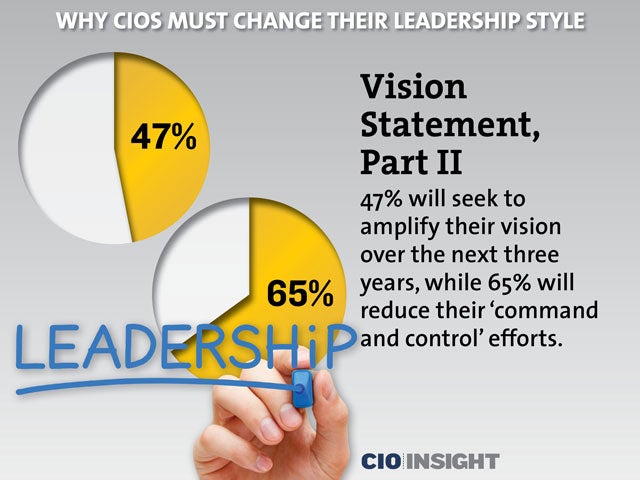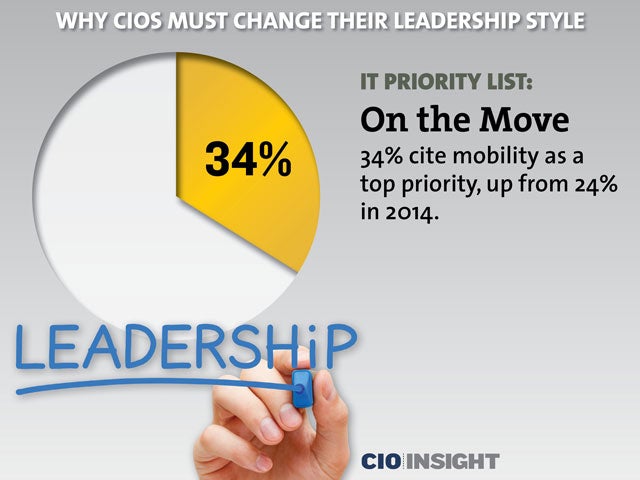
Why CIOs Must Change Their Leadership Style
 Why CIOs Must Change Their Leadership Style
Why CIOs Must Change Their Leadership Style
By Dennis McCafferty
 Vision Statement, Part I
Vision Statement, Part I
75% of surveyed CIOs plan to change their leadership style over the next three years.
 Vision Statement, Part II
Vision Statement, Part II
47% will seek to amplify their vision over the next three years, while 65% will reduce their ‘command and control’ efforts.
 Dicey Territory
Dicey Territory
89% said that the digital world engenders new, vastly different, and higher, levels of risk, and nearly seven out of 10 said their organization’s discipline of risk management isn’t keeping up with the new, higher levels of risk.
 IT Priority List: Smart Move
IT Priority List: Smart Move
50% consider business intelligence/analytics as a top IT investment priority, up from 41% in 2014.
 IT Priority List: Foundational Assets
IT Priority List: Foundational Assets
37% said infrastructure and data centers are a top tech priority, up from 31% last year.
 IT Priority List: On the Move
IT Priority List: On the Move
34% cite mobility as a top priority, up from 24% in 2014.
 IT Priority List: Carefully Plotted
IT Priority List: Carefully Plotted
34% said enterprise resource planning (ERP) is a top priority, up from 26% last year.
 IT Priority List: Weather Update
IT Priority List: Weather Update
32% said the cloud represents a top tech priority, up from 27% in 2014.
 Token Progress
Token Progress
Just one out of 10 said their organization has a chief digital officer, but that’s up from last year.
 Transformational Takeaways: From IT Efficiency to Value Creation
Transformational Takeaways: From IT Efficiency to Value Creation
CIOs must stop dwelling on the cost of IT per dollar of revenue, and focus on increasing the revenue per dollar of IT cost (thus, calculating tech productivity).
 Transformational Takeaways: From Business Case to Benefits Life Cycle
Transformational Takeaways: From Business Case to Benefits Life Cycle
Projects now require more experimentation, innovation and learning. To maximize business value, CIOs should focus more on the execution and ‘benefits harvesting’ stages of the project life cycle.
 Transformational Takeaways: From Aligning With Corporate Culture to Building a Digital Culture
Transformational Takeaways: From Aligning With Corporate Culture to Building a Digital Culture
A traditional, risk-adverse culture that views IT as simply an enabler of transactions will devour the most innovative of digital strategies.